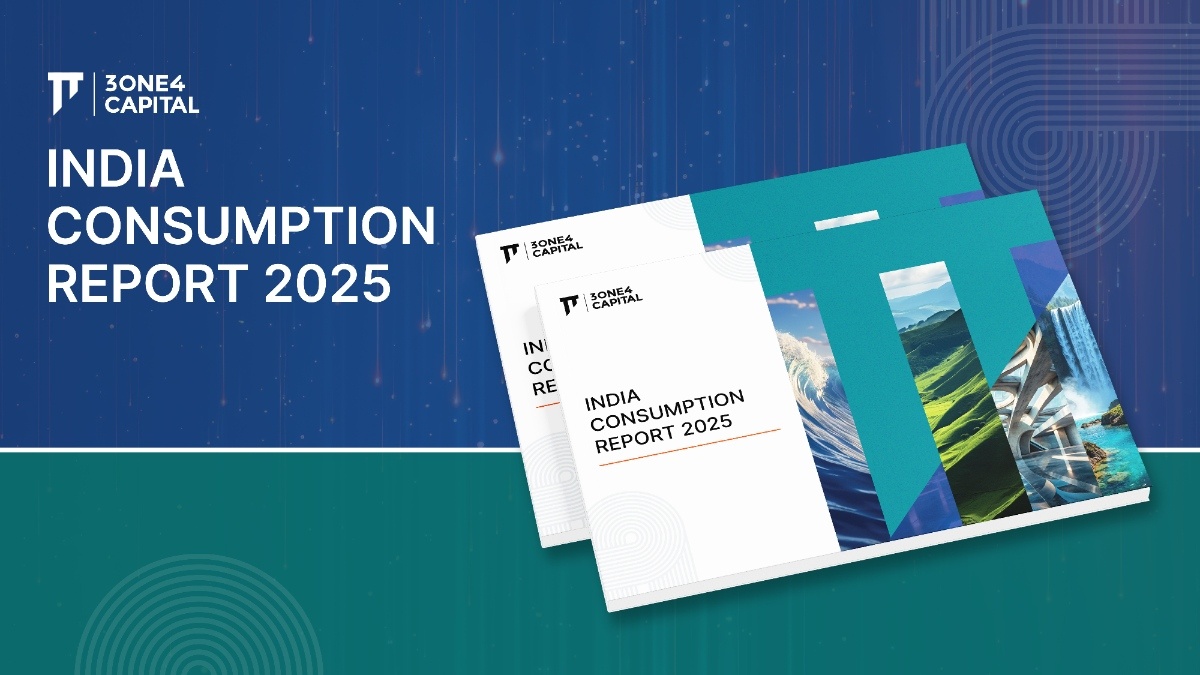
Seven Post-COVID Insights India Must Operationalize
The COVID-lockdown has exposed seven key insights that India must operationalize for accelerated economic growth post-pandemic. India may be the only large economy with positive growth in FY’21 and beyond, provided we deploy the right strategies. The response of the Indian government, administration, and state governments to each of these factors will help India take advantage of the rebalanced global order.
INDIA’S PHARMACEUTICAL AND BIOTECHNOLOGY INDUSTRY IS A TREMENDOUS ASSET
India’s pharmaceutical industry is a global exporter to many countries. Reportedly, 45% of the US’ generics imports are from India. The industry especially shone into prominence during COVID-19. We have become the trusted partner for hydroxychloroquine and paracetamol exports to forty countries amid the pandemic. Pharmaco-diplomacy is a powerful addition to the nation’s arsenal.
Trust in China’s products is declining while trust in India’s pharmaceuticals and medical solutions is at an all-time high, providing a global captive market that is ours to capture. GOI can design the required investments, policy changes, and incentives to boost these sectors to cater to the increased demand.
China dominates the global Active Pharmaceutical Ingredient (API) supply chain utilized in making drugs and generics. India must now nurture its API industry and supply chain to reduce dependence on China and support local manufacturers. With these Make-In-India strategies, the pharma-biotech-API industry will contribute tremendously to economic growth over the next decade.
STRATEGIC NATIONAL STOCKPILES AND DATABASE
India does not have a coordinated Strategic National Stockpile and Database of critical components and medicines to utilize in a pandemic and other Acts of God, as COVID demonstrates.
We must build strategic stockpiles of critical medicines (antipyretics, analgesics, antibiotics, antivirals, vaccines, antidotes, etc.), and components like first-aid, medical devices, surgical and personal protective equipment. The stocks must be distributed around the country with the central and state governments building reserves, so the next time an act of God hits, we stand better prepared. This program will have a double bottom-line effect as it also stimulates local industry and MSMEs.
We also need a centralized database tracking quantities and locations of critical medicines and components in the stockpiles, as well as the manufacturing-supply companies. This requires a dedicated team managing an up-to-date database with a tech-enabled replenishment and upgrade cycle. Further, virology and other testing labs, as well as ICMR hubs, must be expanded nation-wide to build capacity for medical testing. Each Indian state is like a European country and must develop its own rapid-response capabilities.
The Indian defence forces must build their stockpiles of critical components under the Chief of Defence Staff’s office for dual-use. In the event of biological warfare or bioterrorism, the defence can quickly access these stockpiles. In any threat event, the government can utilize these resources to ensure national security.
MIGRANTS
One of the most striking images of the coronavirus-impact in India was the sheer number of migrants gathered at the Delhi border, risking everything to go back to their villages as the lockdown was announced. Interviews reveal they had inadequate food or savings to stay in a zero-employment lockdown situation.
High internal migration is one of India’s most significant economic issues and a consequence of the Great Divergence between the low-growth states in the north-east, and higher-growth states of the south-west. Migrants often have to engage in menial jobs to sustain themselves and don’t save much more than back home.
The onus of job creation and state economic growth is on state governments, whose expenditure budgets are higher than ever before. Every citizen must demand that their elected governments utilize the considerable resources to provide employment and increased wage opportunities in their home states.
Every state must develop a database to track its emigrating citizens to provide rapid-response in unprecedented situations like COVID. The National Skills Development Corporation works with Indian companies and startups to track skills development among blue-collar workers. These tech-platforms can be utilized to manage internal migration.
DIGITAL ON THE RISE
People locked in all over India, and indeed the world, have used digital infrastructure for their every need — payments, receiving Direct Benefits Transfer (DBT) from the government, grocery and medicine delivery, teleconsultations, children’s education, 24/7 entertainment, and more. When India recovers from the pandemic, we will confirm this to be an irreversible shift in behaviour. The GOI must do everything possible now to build disaster-resiliency into the nation’s digital economy.
India, under PM Modi’s leadership, has built a sophisticated technology network on the JAM trinity. State-of-the-art electronic transfer mechanisms like UPI and Jan Dhan accounts for Aadhar-enabled citizens have paved the way for world-class products and reforms driven by a stack of open-architecture APIs. India’s digital leap is a premier public-private partnership (PPP) success. It is vital to invest in the partnership and nurture the digital-first Indian companies.
No other country has reached this unique confluence at the scale India has. China’s digital push is offbeat and not easily translatable to the world. Meanwhile, India successfully builds for the world at scale, evident by the IT industry’s global dominion and the exponential growth of our digital-enabled startup ecosystem. We must operationalize the insights from the COVID-induced digital leap with a sustained partnership between the government and digital companies and startups.
Focus sectors are:
- agri-tech to improve agricultural productivity and output
- telemedicine that utilizes digital platforms to optimize the use of our scant medical resources
- education-tech that can enable India to leapfrog past brick-and-mortar models straight to large-scale digital platforms
- digitization of government databases and records to optimize food security and other benefits, and more.
DBT 2.0 FOR POVERTY-ERADICATION
The taxpayer-funded subsidy system is complicated, susceptible to leakages, and in dire need of simplification via DBT 2.0. India provides Rs. 7.5 lakh crores worth of subsidies aggregately by central and state governments in food, fertilizer, power, and others via 450+ schemes.
The DBT program pioneered by PM Modi’s NDA-I government has been wildly successful in reducing leakages and middlemen inefficiencies. To date, nearly Rs. 10 lakh crores have been disbursed through DBT with an estimated savings of Rs. 1.7 lakh crores by reducing leakages. Particularly during COVID-lockdown, the DBT architecture has enabled the government to provide immediate cash support to crores of Indians in the bottom-of-the-pyramid who were suddenly cash-strapped.
With the value proposition clear and validated, the government can consider subsuming most/all subsidies into a DBT 2.0 model and reduce the distribution of subsidized commodities. Instead of poor citizens moving from one office to the next trying to access their share of the subsidies from 450+ schemes, they could receive most/all their subsidies as one DBT payment per month. DBT 2.0 could increase purchasing power in the hands of India’s most disadvantaged, as analysed here.
GOVERNMENT-BUSINESS CAPITAL FLOW INTEGRATION
With India’s premier digital capabilities and a successful DBT program under our belt, the same must now extend to nurturing businesses and job creators. The COVID-lockdown resulting in unprecedented economic discontinuity left many MSMEs and employers in a liquidity crunch. The administration didn’t release IT and GST refunds until four weeks into the lockdown. These refunds are the taxpayers’ own money and could have been utilized by them through the lockdown to protect their businesses and maintain payroll, as PM Modi appealed to them.
Just like the government has fully integrated into the bottom-of-the-pyramid with DBT, it can integrate with the taxpaying and business community as well. An overwhelming majority of them are honest, taxpaying citizens with Aadhar, PAN, bank accounts, IT and GST returns, and other business details fully declared. A business-first system that integrates these details and taxpaying history with an instant UPI-based refund system will enable the government to process refunds instantaneously.
Taxpayers and job creators constitute India’s economic backbone; they support the revenues that enable the government to respond to the needs of the bottom-of-the-pyramid quickly. The administration must reciprocate with a transparent digital system to ensure hard-earned capital is not held up unnecessarily.
ELIMINATING UNNECESSARY CAPITAL CONTROLS AND REGULATIONS
Without strong business and innovation structures, there is no economic growth. Ever-increasing tax rates are not the answer to diminishing tax collections — we have faced this negative spiral before as a nation pre-1991. The administration’s delayed response in providing relief to the economy’s business and innovation backbone during the lockdown is hurting people and reducing hope.
Seventy years of hardline socialist policies have created an almost insurmountable labyrinth of regulations and controls resulting in massive friction while doing business, creating jobs, managing labour, staying compliant, encouraging investment, planning urban and infrastructure development, and interacting with the civil services. This friction is at odds with Ease of Doing Business — driving our opportunity costs, tax burdens, and execution timelines up.
We need a massive drive to reduce regulations and friction points. President Trump cut 30% regulations in the US to accelerate business- and entrepreneurship-led growth; India could cut 50%, modernize its regulatory infrastructure and create a new dynamic based on trust.
CONCLUSIONS
Addressing these seven points could streamline India’s economy and pave the way for accelerated growth post-COVID. Moreover, many countries are looking to diversify manufacturing and supply chain away from China. By streamlining our economy and sending active delegations to these countries consisting of representatives from the centre and state governments, industry, and entrepreneurs, India can offer a viable alternative to China. Export-orientation and local fortification will enable our next decade of growth.
First published in The Sunday Guardian


.webp)












